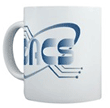| February 5, 2007 General Meeting Review |
| The Virtual Machine |
On February 6 th we had an excellent feature presentation by Rob Limbaugh, a DACS Director, on virtual machines. Rob covered the following in detail:
What are virtual machines? Virtual machines provide an environment where an operating system or parts of one run under a controlling structure (software or hardware) while believing they have total control of their environment. They can run in a machine that may not have the hardware or software the virtual machine is looking for but it is simulated so that it appears to be running natively. Many can be run at the same time and are protected from each other. The limitations of how many and what kind depend on the hardware resources available, the controlling software’s virtual environment restrictions and the vendor’s licensing requirements. This means a given computer can be running Windows XP, Windows Vista, Windows 98, Mac OS and/or Linux all at the same time. It can even run multiple copies of each one. Virtual areas can also be set up within an operating system to protect activities inside it from doing damage to the rest of the system. Most people have heard of dual booting. So what’s the difference between that and a virtual machine? Dual booting allows different operating systems to be resident on the hard disk but only one at a time to be actively running on a given hardware. When they run, each one controls the machine and must be closed or shutdown before another one can be started. Why businesses are interested in them? From a business perspective a virtual machine can be used for testing new software or to add a secondary system to a current machine that has extra resources instead of buying another machine. If the machine is big enough (processor, memory and I/O) a number of virtual machines can be run. This saves the expense of buying additional hardware, and reduces the power, cooling, and space requirements. It also allows older software that may not run on the newest hardware or operating system to continue to run without having to upgrade it or re-write it. Since each virtual machine runs separately, actions in one cannot affect the other so they are protected. This works well for ISPs who have customers that want and pay for their own machine to run along side other customers, who have the same requirements, without having to buy a large number of physical machines. It also allows different operating systems to be run at the same time. It can also be used for development of new applications for hardware that the company doesn’t have, For example, a virtual machine could simulate a PDA or cell phone so applications can be built on a personal computer for these devices without the devices being present. What the average PC user can get from them? The average home user can use virtual machines for some of the same reasons businesses use them but for different ends. Each home user could have their own virtual machine instead of an account under Windows so they would not be able to do damage to the other system. It could also be used to test Linux while running Windows without needing additional machines. And it could come in handy when running certain games that no longer work on the current version of Windows so you could have DOS or Windows 98 running in a virtual machine. Trends in the area of virtual machines: Over time as hardware gets more and more powerful businesses will look more and more to virtual machines because many systems and applications can’t use the full potential of a given box. Power, space, and cooling requirements are already recognized as major problems in the industry, so combining workloads and reducing hardware is a growing key business objective. As one example, it is said that Google has 340,000 servers worldwide and being able to combine multiple workloads of some of the servers can lead to substantial savings. The competition for selling software for running virtual machines is heating up to the point where most vendors are now offering free versions of some of their software. Some of the software currently available: Rob went over a partial list of the virtual system software available. He mentioned:
http://pearpc.sourceforge.net/
http://www.microsoft.com/windowsserversystem/virtualserver/default.mspx
http://www.microsoft.com/windows/virtualpc/default.mspx
http://www.microsoft.com/mac/products/virtualpc/virtualpc.aspx
http://www.vmware.com/download/server/
http://www.vmware.com/download/player/
http://www.vmware.com/products/beta/fusion/ Rob ended his talk with a demonstration of VMWare and showed the Mac operating system running in a virtual environment under Windows along with a number of other virtual machines Many of the audience had questions that Rob was able to answer both with his demonstration while providing additional detail. This was a fascinating topic even though most of the audience will probably never use this capability on their own hardware at home. Thanks to Rob for taking the time to share his knowledge and expertise with us. |
Mugs and more, visit CafePress to order
